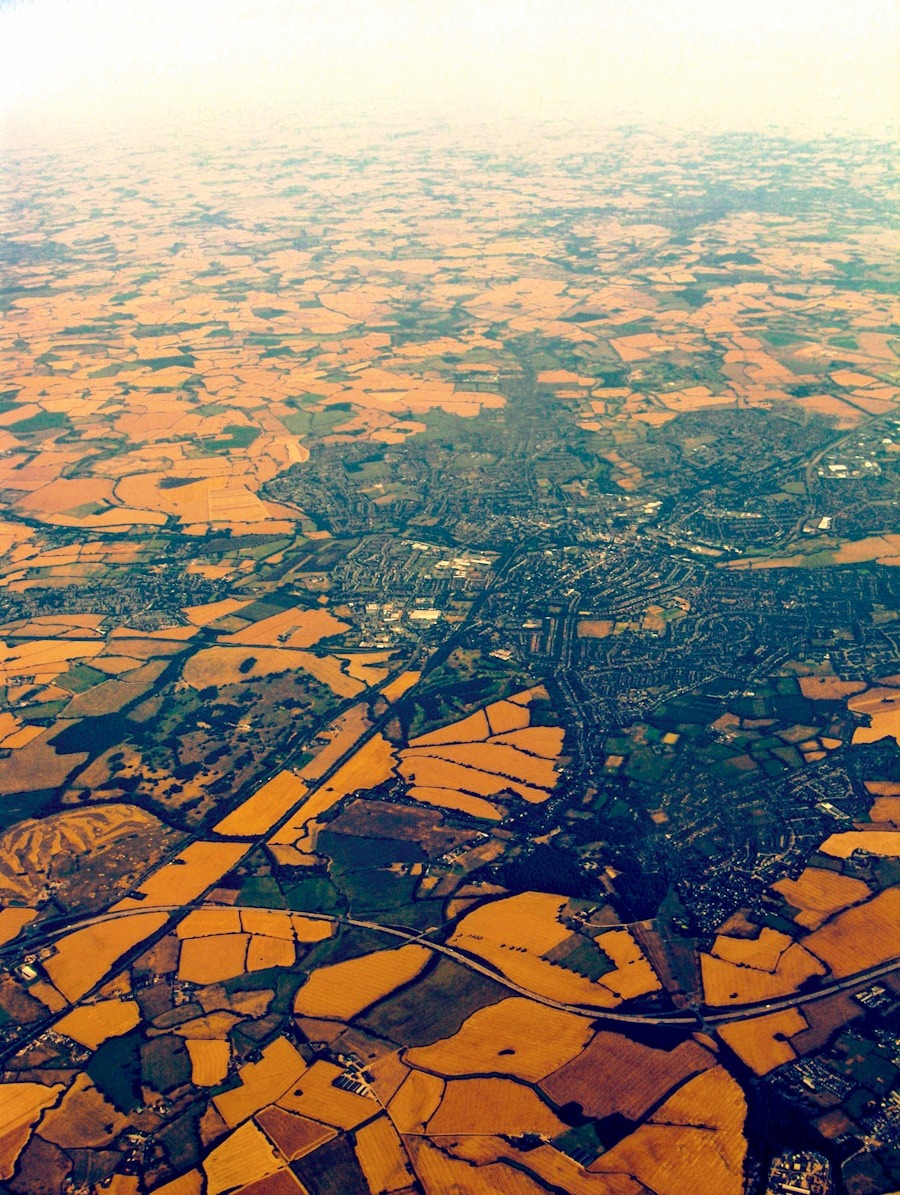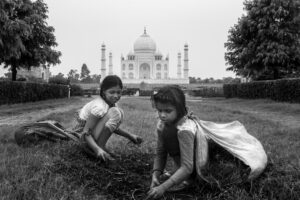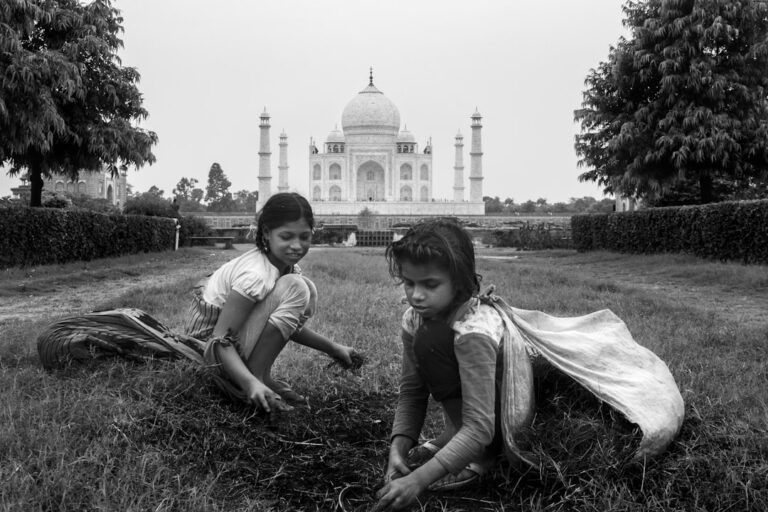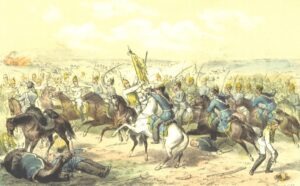The British influence in Punjab, a region that now straddles the border between India and Pakistan, began in earnest during the early 19th century. The British East India Company, initially established for trade, gradually expanded its control over Indian territories, culminating in the annexation of Punjab in 1849 following the Second Anglo-Sikh War. This marked a significant turning point in the region’s history, as British colonial policies began to reshape the socio-economic and political landscape of Punjab.
The British administration implemented a series of reforms and infrastructural developments that would have lasting effects on the region, both positive and negative. The British presence in Punjab was characterized by a complex interplay of governance, economic exploitation, and cultural imposition. The colonial rulers sought to consolidate their power by establishing a bureaucratic system that often disregarded local customs and traditions.
This led to a significant transformation in the way governance was perceived and executed in Punjab. The introduction of Western education, legal systems, and agricultural practices altered the traditional ways of life, creating a new social order that would eventually contribute to the rise of nationalist sentiments among the local populace.
Key Takeaways
- British influence in Punjab began in the 19th century with the annexation of the region by the East India Company, leading to significant changes in the economic, social, cultural, and political landscape.
- The economic impact of British rule in Punjab was profound, with the introduction of cash crops, modern infrastructure, and a shift towards a market-based economy, but also led to exploitation and impoverishment of the local population.
- Social and cultural changes in Punjab under British rule included the spread of Western education, urbanization, and the erosion of traditional social structures, leading to a complex mix of modernization and cultural dislocation.
- Political transformation in Punjab during British rule saw the consolidation of British power through the establishment of a colonial administration, the introduction of new laws and institutions, and the marginalization of local rulers and elites.
- Resistance and revolts against British rule in Punjab were widespread, including the 1857 uprising, the Ghadar movement, and the Akali movement, reflecting the deep-seated opposition to colonial rule and the desire for independence. The legacy of British influence in modern-day Punjab is complex, with lasting impacts on the economy, society, culture, and politics, as well as ongoing debates about the role of colonialism in shaping the region’s history and identity.
Economic Impact of British Rule in Punjab
The economic impact of British rule in Punjab was profound and multifaceted. The British implemented policies that aimed to extract resources from the region while simultaneously introducing new agricultural practices and infrastructure projects. One of the most significant changes was the introduction of cash crops, such as cotton and wheat, which were cultivated for export rather than local consumption.
This shift not only altered traditional farming practices but also made local farmers vulnerable to market fluctuations and global demand.
The construction of railways, roads, and canals facilitated the movement of goods and people, integrating Punjab into a broader colonial economy.
The Lahore to Amritsar railway line, completed in 1860, is a prime example of how British investments transformed transportation in the region. While these developments did enhance connectivity and contributed to economic growth, they primarily served British interests by enabling easier extraction of resources and troop movement. The benefits of such infrastructure were often unevenly distributed, with rural areas frequently left behind as urban centers flourished.
Social and Cultural Changes in Punjab under British Rule

British rule brought about significant social and cultural changes in Punjab, reshaping the region’s identity and societal structures. The introduction of Western education systems led to the emergence of a new educated class that began to challenge traditional norms and practices. Missionary schools and colleges were established, promoting English as a medium of instruction and fostering a sense of modernity among the youth.
This educational shift played a crucial role in awakening political consciousness among Punjabis, as educated individuals began to engage with ideas of nationalism and reform. Culturally, British influence manifested in various forms, from literature to social customs. The colonial administration often viewed Punjabi culture through a lens of superiority, leading to a sense of cultural alienation among locals.
However, this period also saw a revival of interest in Punjabi heritage as intellectuals sought to reclaim their identity in response to colonial narratives. The Singh Sabha movement, which emerged in the late 19th century, aimed to promote Sikh identity and counteract missionary efforts that sought to convert Sikhs to Christianity. This cultural renaissance was pivotal in fostering a sense of pride among Punjabis and laid the groundwork for future movements advocating for social reform and political rights.
Political Transformation in Punjab during British Rule
The political landscape of Punjab underwent significant transformation during British rule, marked by both repression and gradual awakening of political consciousness among its people. Initially, the British employed a strategy of indirect rule through local elites, which allowed them to maintain control while minimizing direct confrontation. However, as discontent grew due to economic exploitation and social changes, political movements began to emerge that challenged colonial authority.
The formation of political organizations such as the Indian National Congress in 1885 provided a platform for Punjabis to voice their grievances against British rule. Over time, these organizations evolved into powerful entities advocating for self-rule and greater representation for Indians in governance. The role of prominent leaders from Punjab, such as Lala Lajpat Rai and Bhagat Singh, became increasingly significant as they mobilized public opinion against colonial policies.
Their activism not only highlighted the political aspirations of Punjabis but also contributed to a broader national movement seeking independence from British rule.
Resistance and Revolts against British Rule in Punjab
Resistance against British rule in Punjab took various forms, ranging from peaceful protests to armed uprisings. One notable instance was the Ghadar Movement in 1914, which aimed to incite rebellion among Indian soldiers serving in the British army during World War
Another significant episode was the Jallianwala Bagh massacre in 1919, where British troops opened fire on a peaceful gathering in Amritsar, killing hundreds of unarmed civilians. This brutal act galvanized public outrage across India and served as a catalyst for increased resistance against colonial authority. The massacre not only highlighted the repressive nature of British rule but also united various factions within Punjab against a common enemy.
In the aftermath, leaders like Mahatma Gandhi called for nationwide protests and civil disobedience campaigns, further solidifying the resolve of Punjabis to seek independence.
Legacy of British Influence in Modern-day Punjab

The legacy of British influence in modern-day Punjab is complex and multifaceted, shaping both its socio-political landscape and cultural identity. The infrastructural developments initiated during colonial rule laid the groundwork for contemporary economic activities; however, they also entrenched inequalities that persist today. The agrarian economy remains heavily influenced by cash crop cultivation, which can be traced back to colonial policies that prioritized export-oriented agriculture over subsistence farming.
Culturally, the impact of British education systems continues to resonate in Punjab’s educational institutions today. English remains a dominant language in higher education and professional sectors, reflecting the colonial legacy that prioritized Western knowledge systems over indigenous ones. Moreover, the political consciousness that emerged during British rule has evolved into a vibrant democratic ethos where Punjabis actively participate in politics at both state and national levels.
In conclusion, while British influence brought about significant changes in Punjab—both beneficial and detrimental—the region’s resilience and adaptability have allowed it to forge its own identity amidst these historical legacies. The interplay between colonial policies and local responses has shaped modern Punjab into a dynamic region that continues to navigate its past while looking toward its future.
One interesting article related to Punjab Under British Influence is “Understanding Iteration Orbits and Types of Orbits in Dynamical Systems” which explores the concept of iteration orbits and their significance in the study of dynamical systems. This article delves into the mathematical principles behind iteration orbits and how they can be used to analyze the behavior of complex systems. To learn more about this fascinating topic, you can check out the article here.
FAQs
What was the impact of British influence on Punjab?
The British influence on Punjab had a significant impact on the region’s economy, culture, and governance. The introduction of British administrative systems, land revenue policies, and infrastructure development transformed Punjab’s traditional agrarian society.
How did British rule affect the economy of Punjab?
Under British rule, Punjab’s economy underwent significant changes. The introduction of cash crops, modern agricultural techniques, and the establishment of a railway network facilitated the commercialization of agriculture and the integration of Punjab into the global economy.
What changes did British influence bring to Punjab’s governance?
The British introduced a new administrative system in Punjab, which included the establishment of a centralized bureaucracy, legal reforms, and the implementation of a uniform system of law and order. This significantly altered the traditional governance structures in the region.
Did British influence impact Punjab’s culture?
Yes, British influence had a profound impact on Punjab’s culture. The introduction of Western education, the spread of English language, and the influence of British customs and traditions led to significant changes in the social and cultural fabric of Punjab.
How did the British influence shape Punjab’s political landscape?
The British influence played a crucial role in shaping Punjab’s political landscape. The establishment of a colonial administration, the introduction of electoral politics, and the emergence of political movements and organizations laid the foundation for modern political developments in the region.






















+ There are no comments
Add yours